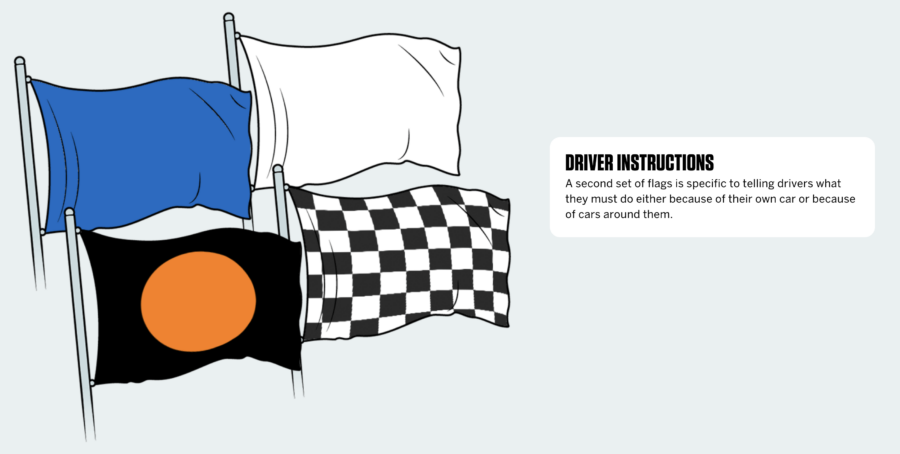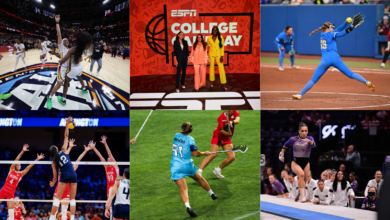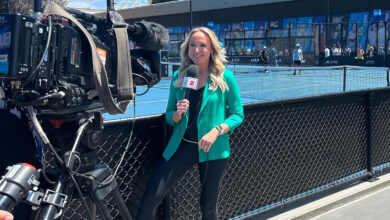F1 Storytelling: Q&A with Luke Knox, Creative Director and Steven Saunders, Managing Editor UK & Africa
ESPN Creative Studio recently released a custom interactive experience on ESPN.com – A Beginner’s Guide To F1 Terms and Tech, which takes beginner racing fans to the ins and outs of race weekend. This guide details the newest technology in the race cars, what each flag means, and even gives real life race examples from prior Grand Prixs.
We caught up with Luke Knox, Creative Director, and Steven Saunders, Managing Editor UK & Africa, to get their insights on the impact that this visual guide might have on beginner fans tuning into this fast-paced racing sport.
Why did you feel there was a need for an F1 visual explainer?
Saunders: One of the brilliant things about working with Laurence Edmondson and Nate Saunders (ESPN F1 Editor and General Editor, respectively) is that they have a thousand different ideas always ready to go at any moment! Once we latched on to it being something of a beginners’ guide, there were several strands that made sense, especially with the illustrative opportunity we had.

The explanation of each flag, for example, is something we’d wanted to do for a while, and could really be brought to life much more impactfully in a visual explainer. With Louisa Frahm, our SEO director, also giving us great insight into what fans were looking for on a regular basis, a visual guide became a perfect way of distilling all of those ideas into an informative one-stop shop for fans.
Knox: As part of the Visual Storytelling division of ESPN Creative Studio, our mission is to shape the stories fans are consuming on every screen – we are designers, concept artists, developers and photo editors who work on everything from TV graphics to film key art to digital presentations. So for us, a visual explainer is an ideal opportunity for the talented storytellers in our group to help drive the narrative and amplify great reporting.
Formula 1 is full of technical details that aren’t easy to explain with written text only – smart visuals make it easier to understand how the airflow works, for example, or where cars are allowed to pass on certain tracks. As we all began talking about this, our team pitched the idea of a custom digital experience to target that growing, curious audience.
How did you go about laying out the different aspects of an F1 race to make sense for the casual fan?
Knox: Creative lead Chris DeLisle and designer Dan Pellegrino created a clean, functional design that emphasized informative visuals and quick bits of information for fans on any screen size. Illustrator Chris Philpot was brought in to create clear technical diagrams. Photo editors Nick Galac and Jason Potterton curated an engaging variety of imagery to dovetail nicely with the reporting. When we landed exclusive footage of Daniel Ricciardo explaining Drag Reduction System for our piece in his own words, that was placed front and center at the top of the experience.

How do you think this guide will create more viewership and fandom in the F1 world?
Saunders: One of the barriers to entry for more complex sports like F1 is just trying to understand what on earth is really going on. To the uninitiated, it can feel a little bewildering – where do you even start with terms and concepts like DRS?
It reminds me of when I first became interested in the NFL when I was young (which, when you’re growing up in Edinburgh, Scotland, can seem pretty alien!). I vividly remember getting a book that was a beginners’ guide to American football, which broke down all the positions and rules and complexities. I absolutely devoured it, and it turned me into an even bigger fan of the sport because I understood it so much better
How does this speak to the power of visual journalism, and what the Visual Storytelling team does?
Knox: My team within Visual Storytelling (including Senior Visuals Editors Alecia Hamm and Dominique DeMoe) focuses on story ideation and visual journalism — we pitch, develop and execute stories that are visually driven while also meeting a high journalistic standard. That’s everything from access-driven features like Ovechkin 800 to data dives such as LeBron James’ Many Jerseys to visually innovative projects like Greatest Super Bowl Drives … not to mention service journalism like this F1 project to make our audience smarter.
We come up with story ideas by seeking out interesting topics, and doing our own research to find a unique, visual-friendly angle to tell the story. That combination (driving the full storytelling process mixed with visual firepower for digital audiences) makes our team truly unique among ESPN storytellers.








